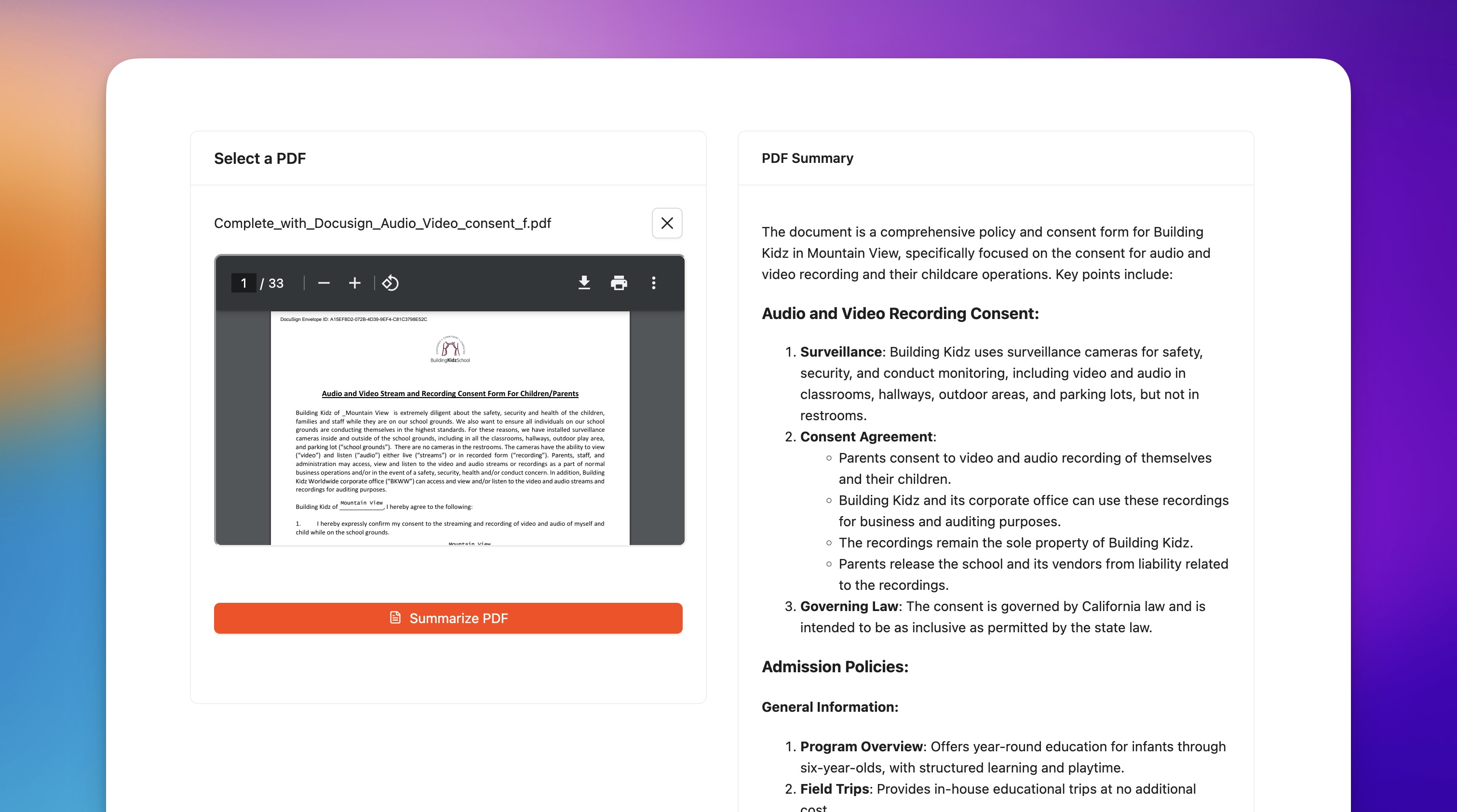PDF Summarizer
Summarize PDFs using AIClick or drag file to this area to upload
Support for a single PDF file upload. File size should be less than 10MB.
How to Summarize a Chapter: A Comprehensive Guide
Summarizing a chapter involves condensing its main points and ideas into a brief overview, which helps in understanding the material better and aids in studying. This guide covers effective techniques, strategies, and tools to summarize a chapter efficiently.
Why Summarize a Chapter?
Summarizing a chapter provides several benefits:
- Enhanced Understanding: Helps in grasping the main ideas and concepts.
- Efficient Studying: Makes it easier to review key points before exams.
- Better Retention: Reinforces learning and aids in memory retention.
Steps to Summarize a Chapter
1. Read Thoroughly
Start by reading the entire chapter to understand its content. Pay attention to headings, subheadings, and any highlighted or bolded text, as these often indicate key points.
2. Identify Main Ideas
As you read, identify the main ideas and supporting details. Note any recurring themes or concepts that seem important.
Tips:
- Look for topic sentences in each paragraph.
- Identify any lists, bullet points, or numbered items.
- Highlight or underline key phrases and terms.
3. Take Notes
Write down the main ideas and key points in your own words. Use a notebook or digital tool to organize your notes.
Tips:
- Use bullet points or numbered lists to keep track of key points.
- Include any significant quotes or data that support the main ideas.
4. Create an Outline
Organize your notes into an outline format. This helps in visualizing the structure of the chapter and ensures that you don't miss any important points.
5. Write the Summary
Begin writing the summary by integrating your notes and outline. Aim for clarity and conciseness, making sure to cover all the main points without unnecessary details.
Tips:
- Start with a sentence or two about the chapter's overall theme.
- Follow with a few paragraphs summarizing the key points in the order they appear.
- Conclude with any relevant conclusions or implications discussed in the chapter.
Using Tools for Summarizing
Today's technology offers various tools to help with summarizing chapters. One such tool is the AI PDF Summarizer by Slik Safe, which can simplify the process of summarizing PDF documents.
How to Use the AI PDF Summarizer
- Upload the PDF: Visit the AI PDF Summarizer and upload the chapter in PDF format.
- Generate Summary: The tool uses generative AI to analyze the document and provide a concise summary.
- Review and Edit: Review the generated summary and make any necessary adjustments to ensure accuracy and completeness.
Tips for Effective Summarization
1. Be Objective
Keep your summary neutral and objective, focusing on what the author conveys without adding your interpretations or opinions.
2. Keep It Concise
A summary should be significantly shorter than the original chapter. Aim to include only the most critical points and avoid redundant information.
3. Use Your Own Words
Writing in your own words enhances understanding and retention. It also ensures that you genuinely comprehend the material.
4. Review and Revise
After writing the summary, review it for clarity, accuracy, and completeness. Revising ensures that your summary is concise and free of errors.
Conclusion
Summarizing a chapter effectively requires a combination of thorough reading, careful note-taking, and organized writing. Using modern tools like the AI PDF Summarizer can streamline the process and improve efficiency. By following the steps and tips outlined in this guide, you can create concise and comprehensive summaries that aid in understanding and retaining key information.
Download Now
The Slikest Files Experience Ever Made

